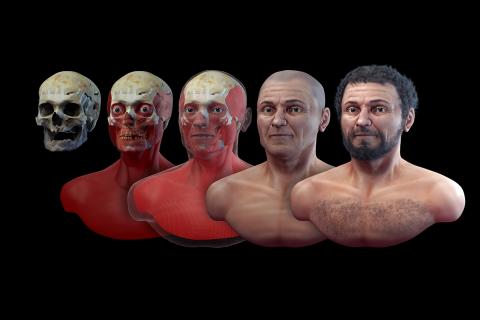Faces of History is an exclusive feature in Ancient Origins Magazine, where we collaborate with the acclaimed historical facial reconstruction expert Cícero Moraes. Known for his unparalleled skill in bringing ancient figures back to life, Moraes guides readers on a captivating journey through time.
In 79 AD, Mount Vesuvius erupted with a fury that no one had predicted. In its path of destruction were Pompeii and the beach resort of Herculaneum, located in southern Italy near the Bay of Naples. The 500-degree-Celsius pyroclastic surge instantly vaporized skin, boiled brains, and burst skulls, leaving victims without a moment to react. Twenty-four hours later thousands were dead, and what remained of Herculaneum and Pompeii was buried under ash.
Of the 350 victims found in Herculaneum, the remains of one man have recieved considerable attention. Known as the Man of Herculaneum, his shattered skull was found during excavations, remarkably preserved despite being damaged by the intense heat.
In this article Cícero Moraes guides us through his work. Using photogrammetry software to create a 3D model of the skull, and using data on the skin thickness of contemporary Europeans within a digital model, Moraes managed to depict a 50-year-old man with features typical of a southern European. This facial reconstruction attracted significant attention worldwide and was featured in major media outlets and translated into multiple languages.
Read more about the Man of Herculaneum in our November–December 2024 issue, “Coming of Age in the Ancient World.” Subscribe to Ancient Origins Magazine today!
Featured Image: Facial reconstruction of the Man of Herculaneum. Courtesy of Cícero Moraes




